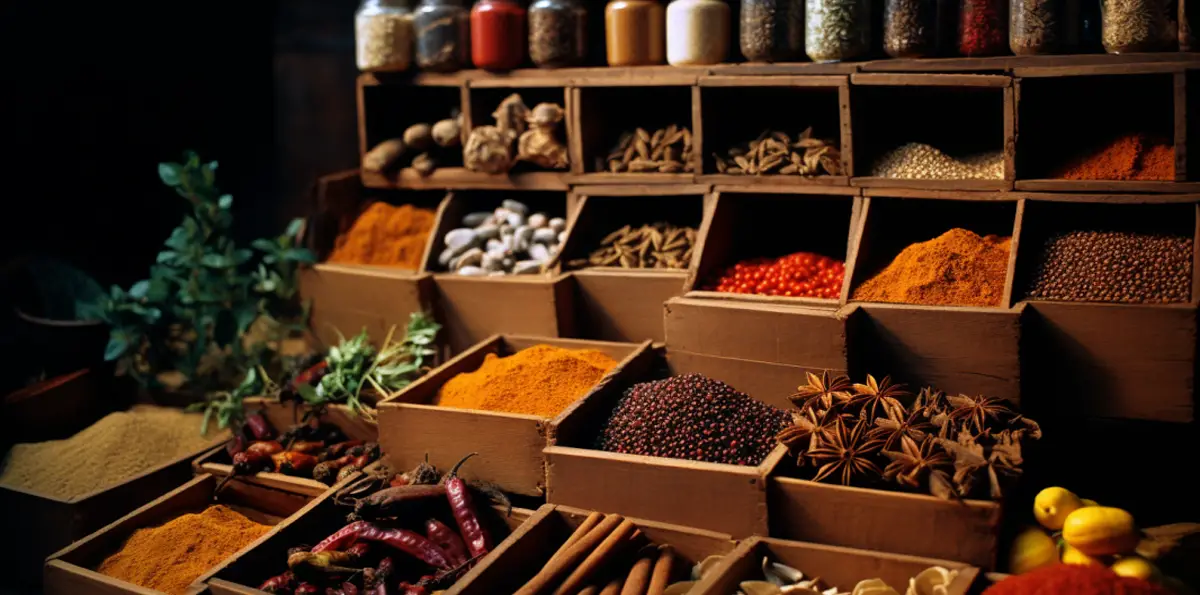Spices are the heart and soul of culinary art across cultures, adding depth, flavor, and complexity to dishes. Whether you’re a novice cook or a seasoned chef, understanding how to utilize spices effectively can transform your cooking from ordinary to extraordinary. Let’s delve into the fascinating world of spices and discover how you can incorporate them into your culinary adventures.
Understanding the Essence of Spices
Spices are derived from various parts of plants: seeds, roots, bark, and fruits, each offering unique flavors and aromas. From the warmth of cinnamon to the earthiness of cumin and the heat of chili peppers, spices enhance taste and contribute to the visual appeal of dishes. Learning to balance and combine spices is key to creating harmonious flavors in your cooking.
Tips for Using Spices
- Start with Freshness: Invest in high-quality, fresh spices to ensure intense flavors.
- Toast for Depth: Dry toasting spices before grinding can enhance their aroma and flavor profile.
- Experiment Boldly: Don’t shy away from experimenting with new spice combinations to find your signature flavor.

Incorporating Spices into Everyday Cooking
Spices can elevate everyday dishes like soups, stews, and even salads. For instance, a pinch of smoked paprika can add a smoky richness to a simple tomato soup, while a dash of turmeric can brighten up a vegetable stir-fry. Understanding the potency of spices and their compatibility with different ingredients will help you strike the right balance in your recipes.
Indian Takeaway: A Flavorful Journey
Indian cuisine is renowned for its extensive use of spices, offering a sensory journey through vibrant flavors and aromas. Urban Tandoor is one of the best Indian takeaways in Bristol, known for its authentic flavors and impeccable service. When ordering Indian takeaway, consider exploring dishes like:
- Chicken Tikka Masala: A creamy tomato-based curry with tender marinated chicken, infused with spices like cumin, coriander, and garam masala.
- Vegetable Biryani: Fragrant basmati rice cooked with an assortment of vegetables and aromatic spices such as saffron, cardamom, and cloves.
- Palak Paneer: A spinach-based curry with paneer cheese, seasoned with fenugreek leaves, turmeric, and cumin.
These dishes showcase how spices can be used to create layers of flavor, from mild and aromatic to fiery and intense. Pair them with naan bread or fragrant basmati rice to fully experience the richness of Indian spices.
Exploring Regional Varieties

Beyond Indian cuisine, every culture boasts its own spice repertoire. Moroccan tagines feature a blend of spices like cinnamon, cumin, and paprika, while Thai cuisine incorporates lemongrass, galangal, and Thai basil for a unique herbal twist. Exploring these regional varieties allows you to appreciate the diversity of flavors that spices bring to global culinary traditions.
Conclusion
Incorporating spices into your cooking opens up a world of possibilities, allowing you to craft dishes that are both comforting and adventurous. Whether you’re adding a pinch of spice to a familiar recipe or exploring exotic flavors in international cuisines, mastering the art of spice usage will enhance your culinary journey. Embrace experimentation, savor the aromas, and let spices be your guide to creating memorable meals that delight the senses. Happy cooking!
